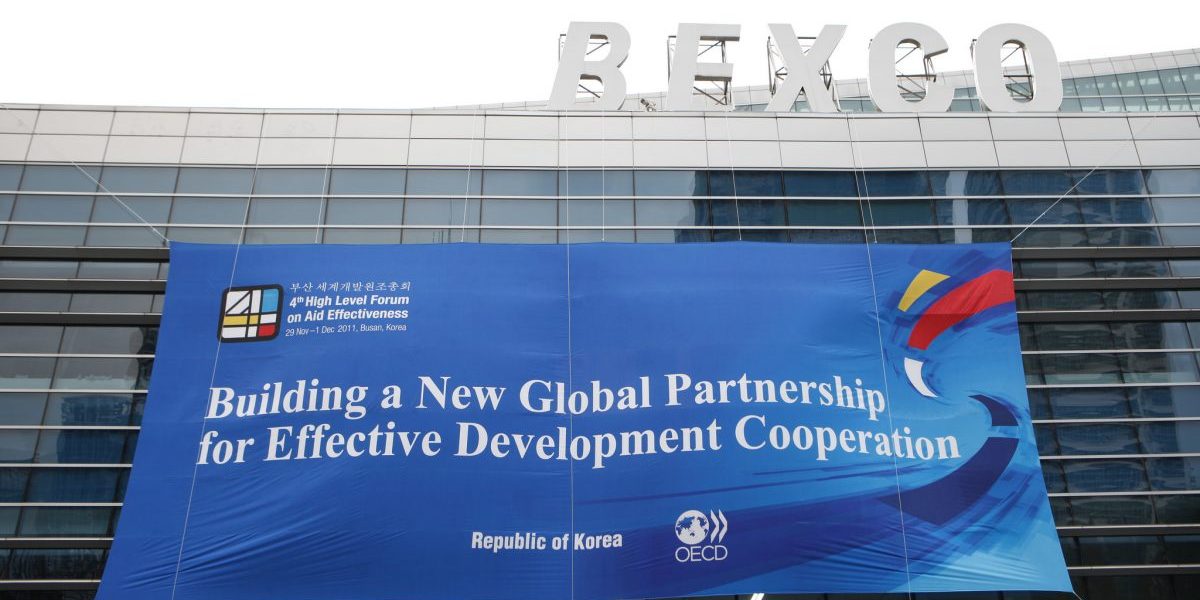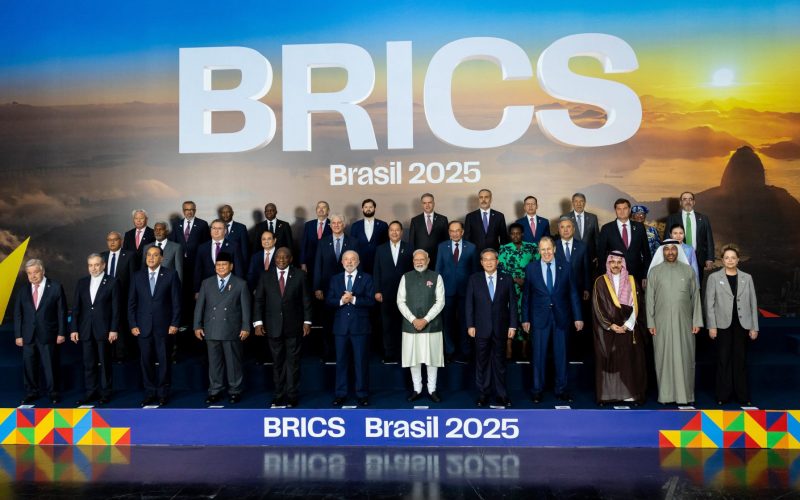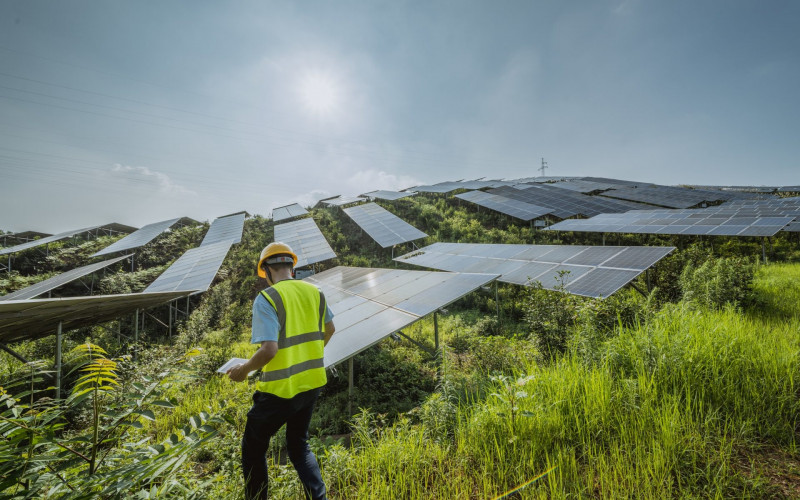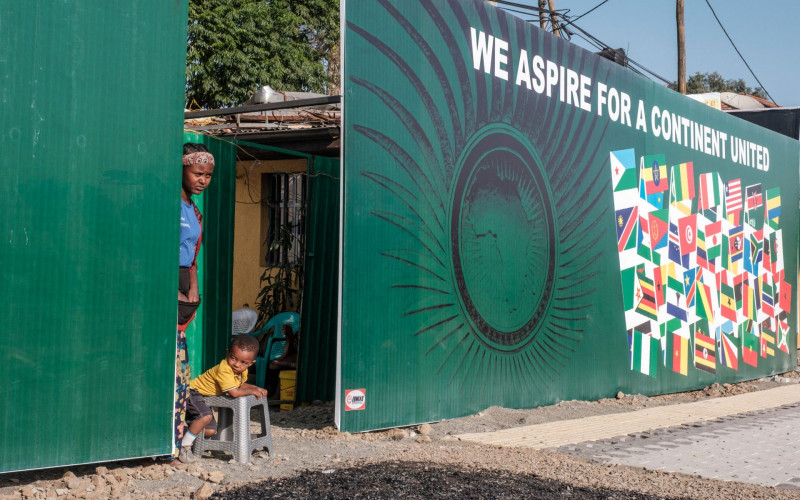From government ministers and representatives of various intergovernmental organisations to parliamentarians, NGOs, academia, and the private sector, this High Level Forum was the largest and included the most diverse set of development actors ever seen before. The event was held against a backdrop of a rapidly changing global development landscape with traditional donors facing major economic crisis, new emerging countries gaining a bigger share of the global economy, and new players such as philanthropies and the private sector playing an increasing role in the developing world.
The old North-South paradigm of ‘aid’ has been almost obliterated from foreign affairs language and replaced by numerous new approaches, modalities and conceptions of development cooperation. Busan HLF4 had to now make sense of it all – bringing together diverse players for the final stretch of the race towards the achievement of the Millennium Development Goals (MDGs), and forging a new global consensus with renewed principles and commitments to achieve effective and sustainable global development.
The complex logistics of the HLF4 were superbly managed by Korea who was a very appropriate host for such a forum. Korea in fact has been the ‘poster child’ of development, transforming from a war-ravaged poverty-stricken country in the 1960s into a donor country and member of the Organisation for Economic Co-operation and Development (OECD) in recent years. Korea however was not the only country to show-case the ‘Asian miracle’. The gathering looked at Vietnam, India and especially China for their successful development story to share with the rest of the world. Yet, the caveat was that these Asian experiences could not necessarily be replicated so easily in Africa and in other developing countries. Some critics argued that such economic development gains need to be offset by the democracy, human rights and environmental deficits that characterised certain Asian states.
Building on the previous forum in Accra, the HLF in Busan re-stated the critical role that emerging powers in Asia but also in Latin America and the Middle East play in global development. Their ‘South-South Cooperation’ complements the traditional North-South aid relationships. These so called ‘new donors’ are actually not new. They have always had an influence in their respective regions; however, in recent years their resources have increased to now constitute a significant share of the assistance received by developing countries. The conference reflected on how the economic crisis and natural disasters have also contributed to overturn provider-recipient relationships. During the earthquake in March for example, Japan received aid from numerous developing countries and in its recent flooding crisis, Australia received support from Indonesia and Papua New Guinea.
South-South Cooperation (SSC) was presented as an important model of exchange of resources, technology, skills, technical know-how among developing countries, relying much on concessional loans, trade, technical assistance and capacity development. In contrast to the Northern development packages that emphasise governance and the social sectors, South-South Cooperation tends to favour the economic sectors and infrastructure development. The rhetoric of SSC has been to move away from the traditional charity-based model to foster more equal horizontal relationships between developing countries based on mutual interest, peer learning, trust, respect for sovereignty and non-interference in internal governance matters. Conversely tied aid has also been a major feature of South-South Cooperation, especially in the case of China. Most middle-income countries who are also providing development cooperation in fact still have high poverty levels and are thus still concerned with growth of their own industries, companies, products and human resources. This has provided the rationale for some of these emerging donors to tie the development assistance they provide to third countries to products, experts and service providers from the home country.
Their particular development profile thus spurred emerging economies to demand in Busan that they have ‘differential commitments’ in the application of the aid effectiveness principles, as it would not be fair to hold new donors to the same standards of traditional donors who have been operating in the aid sector for decades. The BRIC (Brazil, Russia, India, China) countries, none of which are members of the OECD-Development Assistance Committee (DAC), have in all previous High Level Forums resisted being part of the ‘Paris process’ and subject themselves to the same peer-review and accountability processes of the traditional donors. As a result transparency and rigor in the reporting of aid have suffered in the case of most middle-income countries.
Country delegates in the lead up and during the 4th High Level Forum rallied around the development of a conference outcome document termed the ‘Busan Partnership for Effective Development Cooperation’. Inevitably, the tensions between recipient and donor countries on issues of tied aid and use of country systems continued to persist also in Busan. But this time around the emerging donors such as China, India and Brazil presented a further obstacle to a global consensus around a common set of aid effectiveness commitments.
Though politically and economically, South Africa was on the border-line with its other sister emerging economies, it interestingly chose to maintain its political alliance with the low-income partner countries in Africa and thus promote the African agenda (outlined in the APDev Consensus). The Consensus emphasized national ownership, use of country systems, capacity-development, breaking the cycle of aid dependency and exploring alternative sources of development financing, including South-South Cooperation.
Though middle-income countries such as South Africa, Indonesia, and Colombia had already been engaging with the Working Party on Aid Effectiveness (WP-Eff) and other DAC processes since the Paris HLF, in Busan it proved much more challenging to bring the bigger Southern countries such as China, Brazil, India into the aid effectiveness debates. These Southern superpowers have systematically resisted following rules of engagement, which they had no part in developing. Without compromises in Busan, it was clear that China and others would not take part in the new global partnership. At the eleventh hour agreement was reached by adding the following line to the second paragraph of the Busan Outcome Document – ‘The principles, commitments and actions agreed in the outcome document of Busan shall be the reference for South-South partners on a voluntary basis.’
Overall the final outcome document was a weaker text compared to earlier versions. Many issues were left open, to be resolved in 2012, including the establishment of a New Global Partnership (supposedly more inclusive, legitimate, streamlined and effective) to monitor the aid effectiveness commitments and oversee the operation of old and new development actors. While the WP-Eff with the support of the OECD and UNDP has been mandated to finalise these working arrangements by June 2012, partner countries have meanwhile been urged to start developing nationally-led aid accountability frameworks with clear target indicators and reporting schedules to monitor development cooperation commitments at country level. The main aim of the Busan High Level Forum was to create a more inclusive development partnership and to bring a large spectrum of traditional and emerging development actors into the same global development enterprise… but inevitably this came at a cost. It might be a long and gradual process but at least China and other important players are now starting to take part in the aid effectiveness game!








